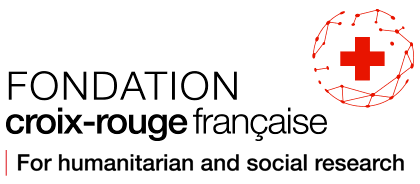Every year, more than 16 million people worldwide are trained in first aid by the Red Cross and Red Crescent. What is the real impact of this mass action and what are the avenues for improvement of this training, which each year strengthens the cohort of citizen rescuers? It is to answer these questions that this research, supported by the Andorran Red Cross, was conducted by Céleste Fournier, a researcher hosted at the University of Paris Dauphine, a specialist in training and learning issues.
What are the issues at stake in the research you conducted on first aid training given in different Red Cross centres?
Celeste Fournier – In first aid training, knowledge is imparted that participants listen to, learn and hopefully retain. Pedagogy also emphasizes practice and role-playing. However, at the end of the training, many trainees doubt their ability to cope with a situation requiring first aid, such as a feeling of discomfort or cardiac arrest. The doubt about their ability to intervene is even greater after a few months or a few years. The question that arises is that of the effectiveness of the training provided, of its real impact, particularly over time. The aim of this research is therefore to identify the specific behaviours and attitudes that could be worked on to enable the people trained to feel capable of taking action in an emergency situation – in other words, to encourage people to take action.
What are these attitudes and behaviours that would make it possible to take action?
CF – We have identified, with the help of first aid trainers, three main attitudes and behaviours that promote action: the person must feel legitimate to act, capable of acting, and confident. Legitimacy to act is not self-evident: it is then a question of making people aware of the crucial role that PSC1* holder can have in the chain of help. First of all, as “citizen rescuers”, we are the first link in the rescue chain and our action can save lives. Secondly, although it is legally obligatory to help in an emergency, the citizen has no obligation of result. These are the messages that could be found in the training’s speech.
*Person holding a first aid training certificate
How can ability to act and trust be concretely strengthened?
CF – The ability to act depends on how one masters the technical gestures. At present, training courses teach how to perform a succession of technical gestures in response to a given situation. For example, for the LSP (lateral safety position) of an unconscious person, the trainees have to remember many instructions to perform the perfect gesture. In six months time, it is not certain that they will fully remember them. This could hinder the learner’s ability to act. One response is to let the learner appropriate the intervention and focus the learning on the main principles and objectives of the actions. For example, in the case of LSP, these are to stabilize the person by gently placing him or her on his or her side and freeing the airway. The gestures must be given more meaning and their objectives must be emphasized.
In the same perspective, the aim would be to bring the trainees to make their decisions autonomously by reasoning step by step. Today, there is a tendency to compartmentalise interventions. In the case of a cardiac arrest, we learn that we must make such gestures, in the face of such other discomforts. Instead, trainees should be helped to rediscover the logic of the action to be taken through a tree of reflection, i.e. a series of questions. Is the victim breathing? Is he or she conscious? Etc. so that the answers guide the rescuer, in a logical way, towards the right gestures and the right attitude.
Of course, trust is essential in the act. Trainees must feel able to use their knowledge if the situation arises. They should be reassured about the value of the gesture learned, and adopt a posture of a caring and facilitator coach.
Your work has resulted in the development of a questionnaire. Can you tell us more about it?
CF – This questionnaire should be a tool to measure the behaviour and attitudes of the trainees. Ideally, it should be filled out at the end of the training and again several months later. It is therefore not a question of assessing knowledge but of evaluating the evolution of the three pillars of the process of taking action: the ability to act, the legitimacy to act and the confidence to act. For example, among some thirty statements, the questionnaire contains this one: first aid actions are simple to perform. The possible answers are spread over five levels ranging from “strongly disagree” to “strongly agree”. On this statement, it may be interesting to observe the evolution of the learner’s perceptions just after the training and six months later. On the question of confidence, the statements are more about understanding the objectives, the impact of the intervention and the need to act quickly.
A first version of the questionnaires was tested with more than a hundred learners. The objective is to reduce and validate the questionnaire in order to make it a usable, rigorous and coherent tool that will allow a real evaluation once training practices have been adapted and, ultimately, a concrete improvement in the effectiveness of the training courses.





